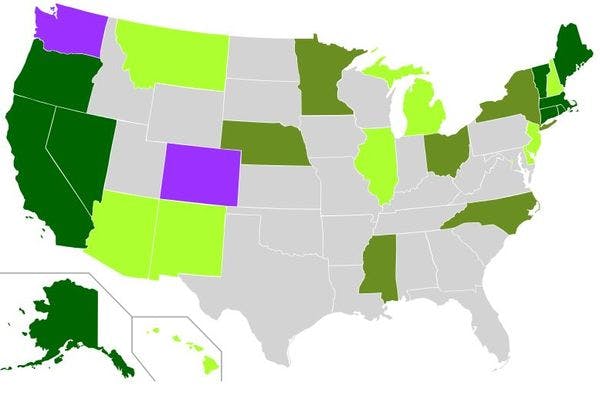A hundred years after the war on drugs began, is it finally winding down?
One hundred years ago this March, the Harrison Narcotics Act came into force, heralding the onset of American drug prohibition. It promptly spread across the globe. 2015, however, may well be remembered as the year that the cure for criminalization broke the drug war fever.
If nothing else, there have been an awful lot of encouraging signs since January.
For starters, 2015 was marked by a hastening of the end of the national war on pot. Two new states—Oregon and Alaska—joined Colorado and Washington in implementing recreational marijuana legalization, as did Washington, DC, (albeit in a bizarre fashion that doesn't actually provide a reliable source of legal pot other than growing your own.)
Gallup polling in favor of complete national legalization also matched an all-time high of 58 percent, with support having roughly doubled since the 1990s, and more than a dozen states could vote on pot legalization either through ballot initiatives or legislatures in 2016.
The top two contenders for the Democratic presidential nomination, Hillary Clinton and Bernie Sanders, have both expressed some openness to allowing states to legalize, with Sanders going further and suggesting that marijuana be removed from federal drug prohibition laws, as well. And even Republican candidates Donald Trump, Jeb Bush, and Ted Cruz are in favor of letting the states decide—an unprecedented level of mainstream political support for what as recently as the 1990s seen as a fringe position.
Even the cops began taking steps towards drug decriminalization in 2015. A formal initiative, started in 2011 in Seattle and known as Law Enforcement Assisted Diversion (LEAD), showed stunning results in an outcomes evaluation published this year. The idea of LEAD is to bring the concept of "harm reduction" into policing: Rather than trying to force drug users to quit by arresting and incarcerating them, the program aims to cut harm by attracting users into recovery, or at least less-harmful use instead.
Click here to read the full article.
Keep up-to-date with drug policy developments by subscribing to the IDPC Monthly Alert.
Thumbnail: Wikipedia
